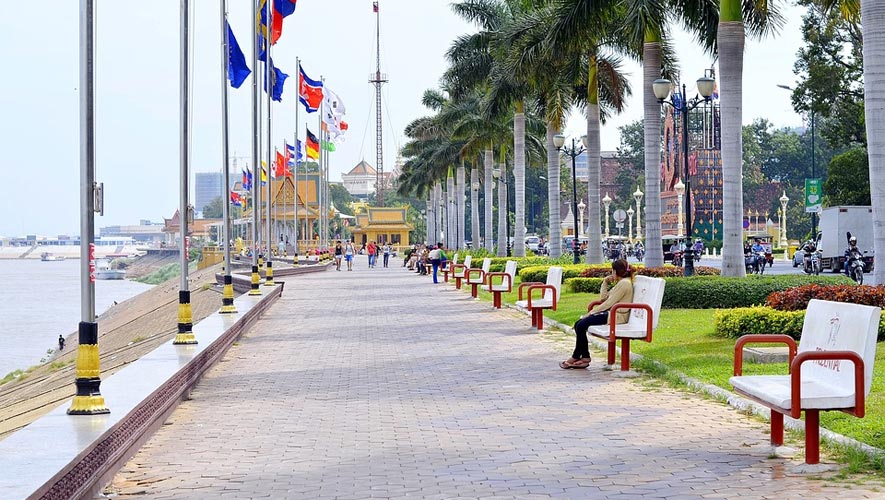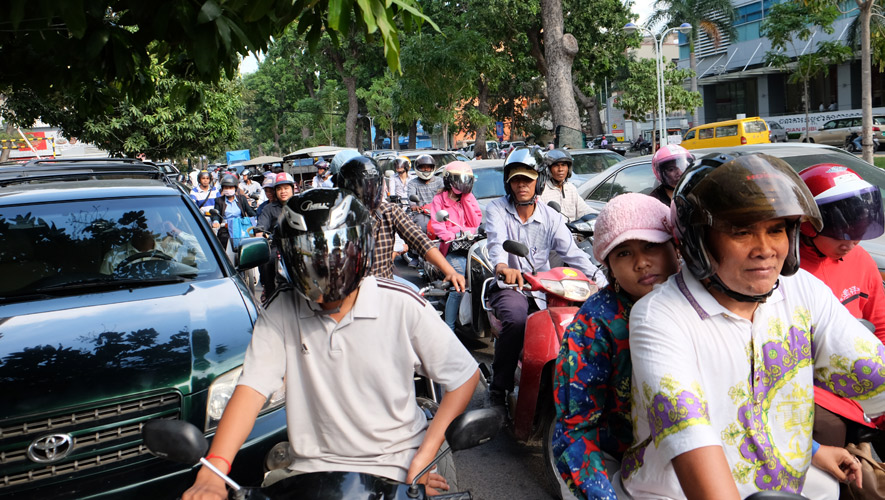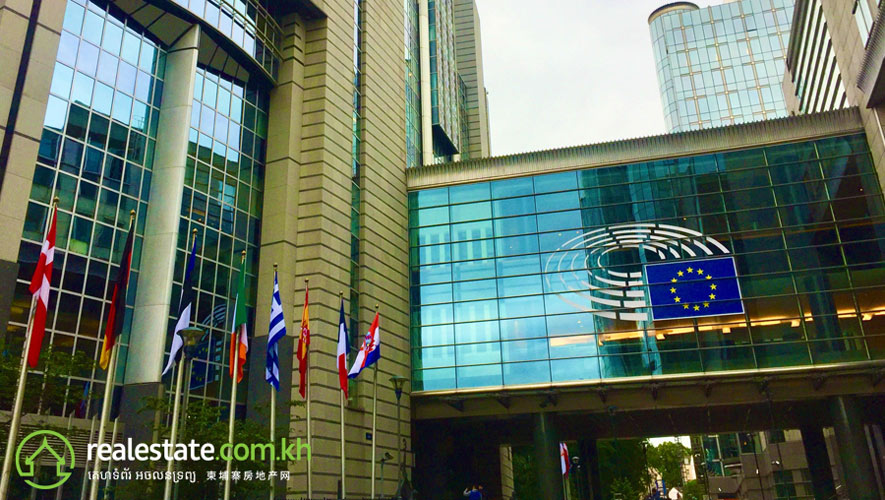Tapped to transition to a smart city, Phnom Penh will be starting from the ground up, literally. The first thing on the capital’s smart city agenda is fixing the crowded and potholed sidewalks.
For the latest Cambodian Business news, visit Khmer Times Business
“That might not sound ‘smart’,” says Phnom Penh City Hall administration director Seng Vannak.
But he insists it is necessary if bigger things are to come. “We have chosen the whole city,” he says. “We want to be smart.”
Smart cities are usually associated with technology like Internet of Things and blockchain and Vannak is keenly aware of that.
He says he is also aware that unless the city is navigable for pedestrians and public transport grows, the rest is meaningless.
“We have lost all rules and regulations, everyone wants to build,” he adds while showing photos from the 1920s and 1960s that depict a city without major traffic problems. “We are facing more and more problems with rapid urbanisation,”he says.
The capital’s sidewalks are notoriously impassable for the city’s pedestrians. Pitted with holes and blocked by cars, motorbikes and food vendors, most of the city’s walkers find themselves in the street dodging traffic.
For that reason, the vision is to first improve the urban environment to enhance the city’s quality of life before tackling the tech. That means mobility.
“Under the Smart City Action plan we have to build infrastructure,” Vannak says of a city that has grown to 692 square kilometres, 14 districts and with a population of 2.8 million.
“We need to restore the sidewalks for a greener and smarter Phnom Penh,” he says.
A smart Phnom Penh will start in two phases, comprising sidewalks and public transportation. The two are designed to work together. “How can we encourage people to walk to the bus station (without proper sidewalks)?” he asks. The master plan also calls for a ring road to keep truck traffic outside the city centre.
The plan for public space usage will focus on 11 boulevards beginning with Norodom Blvd. “We need to reduce pressure on traffic flows caused by inappropriate parking and unlicensed street vendors,” he says.
The city wants to put street vendors in designated food courts. Once it has this space it can integrate smart technology and collect data.
That brings him to the second phase, which is improving the efficiency of public transportation and getting more people out of their cars and on to buses.
“The CBA (Cambodian Bus Authority) is currently focusing on embracing and modernising the bus service with smart technology,” he says.
He adds that smart is one thing, but first the infrastructure must be ready. “Smart has so many meanings How are we supposed to be smart and sustainable?” he says.




